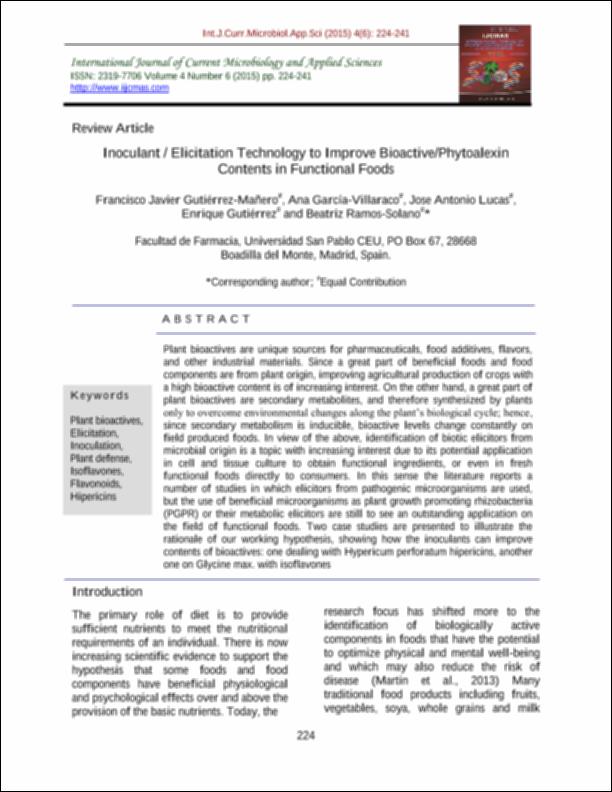Please use this identifier to cite or link to this item:
http://hdl.handle.net/10637/15985Inoculant / Elicitation Technology to Improve Bioactive/Phytoalexin Contents in Functional Foods
| Title: | Inoculant / Elicitation Technology to Improve Bioactive/Phytoalexin Contents in Functional Foods |
| Authors : | Gutiérrez Mañero, Francisco Javier García Villaraco, Ana Lucas García, José Antonio Gutiérrez Albanchez, Enrique Ramos Solano, Beatriz |
| Keywords: | Plantas -- Defensas; Plant bioactives; Inoculación; Flavonoids |
| Publisher: | International Journal of Current Microbiology and Applied Sciences |
| Citation: | Gutierrez-Mañero, Francisco Javier, Ana García-Villaraco, José Antonio Lucas, Enrique Gutiérrez and Beatriz Ramos-Solano. “Inoculant / Elicitation Technology to Improve Bioactive/Phytoalexin Contents in Functional Foods.” (2015) |
| Abstract: | Plant bioactives are unique sources for pharmaceuticals, food additives, flavors, and other industrial materials. Since a great part of beneficial foods and food components are from plant origin, improving agricultural production of crops with a high bioactive content is of increasing interest. On the other hand, a great part of plant bioactives are secondary metabolites, and therefore synthesized by plants only to overcome environmental changes along the plant‟s biological cycle; hence, since secondary metabolism is inducible, bioactive levels change constantly on field produced foods. In view of the above, identification of biotic elicitors from microbial origin is a topic with increasing interest due to its potential application in cell and tissue culture to obtain functional ingredients, or even in fresh functional foods directly to consumers. In this sense the literature reports a number of studies in which elicitors from pathogenic microorganisms are used, but the use of beneficial microorganisms as plant growth promoting rhizobacteria (PGPR) or their metabolic elicitors are still to see an outstanding application on the field of functional foods. Two case studies are presented to illustrate the rationale of our working hypothesis, showing how the inoculants can improve contents of bioactives: one dealing with Hypericum perforatum hipericins, another one on Glycine max. with isoflavones. |
| Description: | Información completa de la publicación en la siguiente URL: https://www.ijcmas.com/Archives-31.php |
| URI: | http://hdl.handle.net/10637/15985 |
| Rights : | http://creativecommons.org/licenses/by-nc-nd/4.0/deed.es Open Access |
| ISSN: | 2319-7706 |
| Issue Date: | Jun-2015 |
| Center : | Universidad San Pablo-CEU |
| Appears in Collections: | Facultad de Farmacia |
Items in DSpace are protected by copyright, with all rights reserved, unless otherwise indicated.


